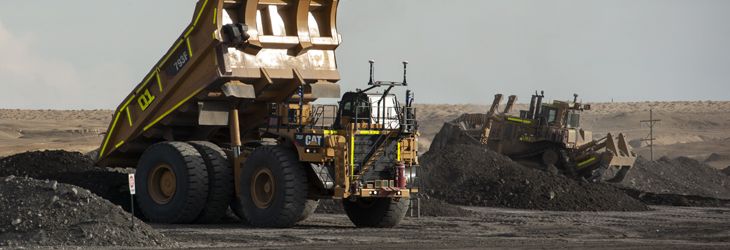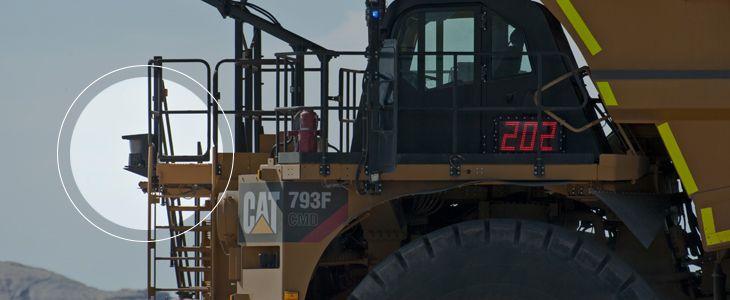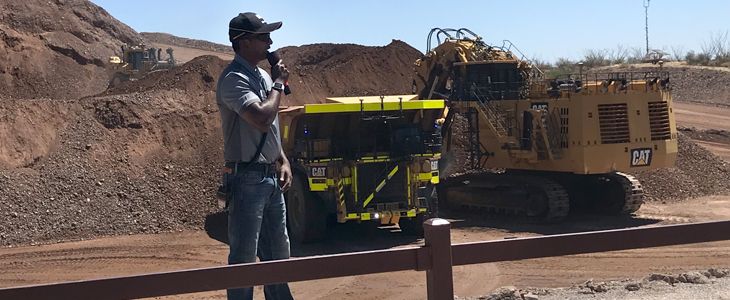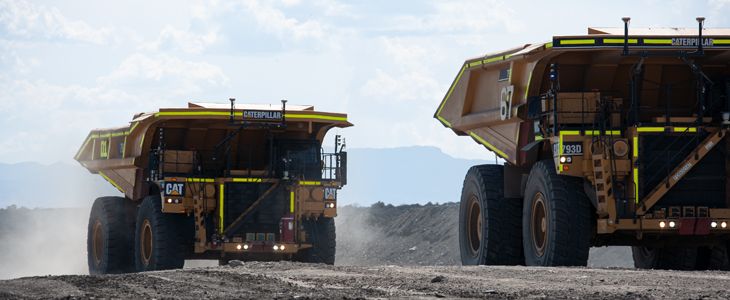

Sign In
Welcome! Sign In to personalize your Cat.com experience
If you already have an existing account with another Cat App, you can use the same account to sign in here
Register Now
One Account. All of Cat.
Your Caterpillar account is the single account you use to log in to select services and applications we offer. Shop for parts and machines online, manage your fleet, go mobile, and more.
Account Information
Site Settings
Security
HOW DOES AN AUTONOMOUS TRUCK SEE?
A Caterpillar autonomy expert explains
By Caterpillar | Posted June 15, 2022
A mine site is an ideal environment for autonomous vehicles. Haul trucks travel predictable routes at predictable speeds. They go from fixed point to fixed point, usually from a loading tool to a dump and back. And autonomous machines are immune to the fatigue and distraction faced by human operators who spend hours at the wheel performing a monotonous task.
But that doesn’t mean there are no obstacles to autonomous operation. One of the biggest is also one of the most obvious: Even if the route is predictable, the behavior of everything and everyone else on the road is not. Other machines, light vehicles, personnel on foot, loose debris and more might end up in the path of an autonomous truck.
Being able to detect and react to surrounding conditions and obstacles is critical to the safety and productivity of an autonomous haulage system. For a human operator, this process is simple enough. Observe another vehicle approaching an intersection, apply the brakes depending on priority rules at site, wait until the obstacle or vehicle is clear, and resume driving.
But how does a truck with no driver see what’s coming?
That’s where the truck’s perception system comes in, said Jagath Samaraweera, a commercial consultant for the Caterpillar autonomous haulage solution, Cat® MineStar™ Command for hauling.
“This is probably the most common question we get about our autonomous trucks,” said Samaraweera. “How does it see where it’s going? There’s a long, technical answer that gets into the details and algorithms, but the simple answer is that it all works because of our perception system, which is called LiDAR.”

HOW IT WORKS
LiDAR is a laser-based imaging system that fires its 64 Class 1 lasers over one million times per second, creating a detailed point cloud showing where the lasers encounter solid objects. It is a key part of Command for hauling.
The device’s cylinder rotates at 600 rpm, offering wide coverage of the truck’s path to ensure that nothing enters the area without the truck detecting it in time to respond appropriately. This could mean slowing down, stopping, honking the horn or any other action necessary to avoid a hazardous situation.
According to Samaraweera, LiDAR began its life as a commercial product before it was hardened by Caterpillar for the harsh conditions of mining’s 24/7 operations.
“We’ve spent over a decade hardening, testing, updating and improving this system,” he said. “When we bought it, the trucks would stop nearly 200 times a day for dust. Now our machine learning has gotten so good they don’t even slow down for dust anymore.”
“They run in the rain, fog, snow. They run at night. They’ll stop to let kangaroos cross the road. I’ve even seen one on a site in Canada follow a family of moose down the road at a safe speed until they got out of the way.”

WHY IT’S BETTER
According to Samaraweera, LiDAR is one of the biggest differences between Command for hauling and other autonomous haulage systems.
“LiDAR is the best perception system out there,” he said. “It lets our trucks run faster than anyone else’s, and that means they’re more productive and more efficient. In all cases they’re more productive than staffed equipment.”
But productivity isn’t the only benefit of automation. In fact, safety may be the most important benefit of Command for hauling.
Even the safest mine site still has hazardous conditions, but if a truck has no operator, it can enter those areas with no safety risk. A great example of this ability is the blast radius, Samaraweera explained.
“Usually truck operators have to stay out of the blast radius for safety,” he said. “With no operators, those trucks can operate through the blast radius if the customer chooses, which allows them to be more productive.”
In addition, unlike human operators, an autonomous truck cannot experience fatigue or distraction — conditions that can have a huge impact on the safety of a mine site.
“Safety is the ultimate goal here,” said Samaraweera. “Keeping operators out of the cab is obviously good, but LiDAR is a big part of what makes it safe for Command trucks to operate around other machines and people, too.”

CONTINUOUS IMPROVEMENT
To date, Cat autonomous trucks have hauled more than 5 billion tonnes (5.5 billion tons) of material without a single lost-time injury. Over the years, the company has developed a number of new patents and trademarks as engineers iterate on the system. But Samaraweera said they continue to find new ways to increase its effectiveness.
“As successful as LiDAR is — our trucks have traveled more than 145 million kilometers using this system — we’re always looking at new ways to improve it,” he said.
Command for hauling was recently implemented for the first time on a site in the Canadian oil sands, a harsh environment with driving snow, freezing temperatures and extremely soft underfoot conditions. According to Samaraweera, a critical part of this implementation was developing the ability to detect ruts in the soft, snowy haul roads and powering through them rather than detecting them as obstacles and coming to a stop — which can cause a truck to become stuck.
Other improvements are less dramatic but no less significant. Increasing the machine’s ability to distinguish between objects and the speed with which it can respond to obstacles can make trucks even faster, safer and more productive.
“Autonomy is here to stay. It’s the future of the mining industry,” said Samaraweera. “We’re proud of what we’ve accomplished so far, and we’re excited to explore new possibilities with our customers.”



